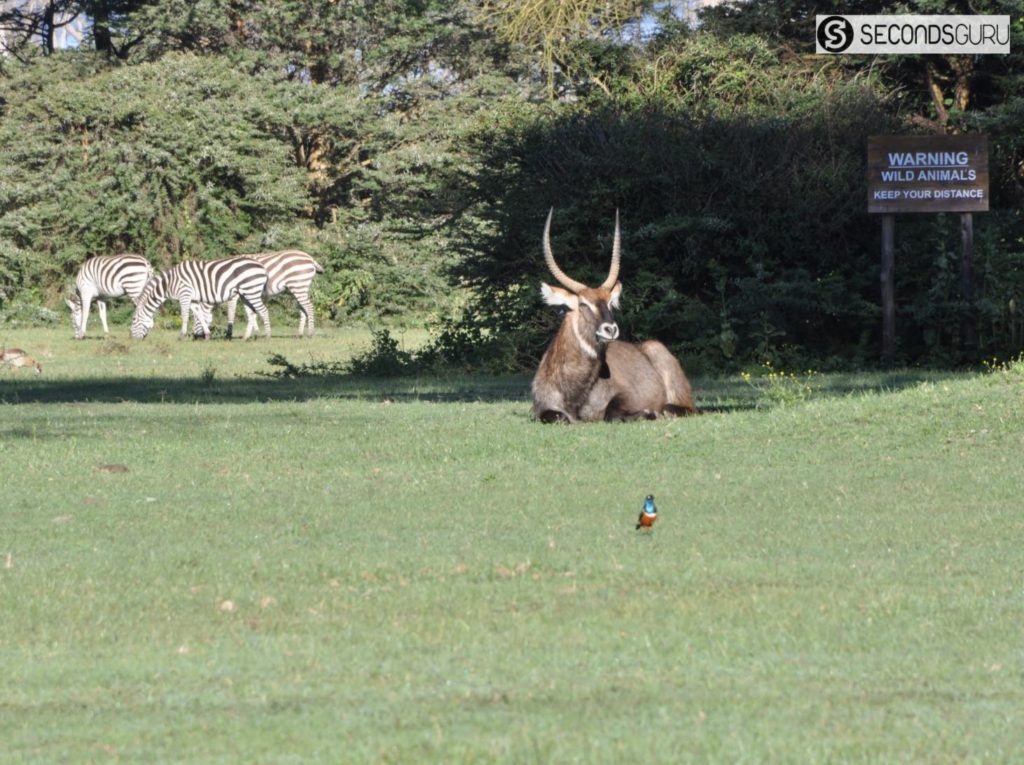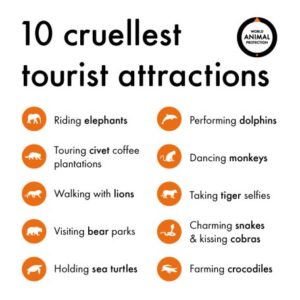Published 5 September 2020 ● Last Updated on 24 January 2022
It was 5:45 AM. The gate to the safari trail had not yet opened. Six of us huddled closely together in an open jeep as we braced ourselves against the bone-chilling morning wind in Ranthambore, Rajasthan(India). To add to the suspense of our wait, the tour guide pointed out fresh paw marks- “Lagta hai bageda abhi yahan se gaya hai” (Looks like a tiger has just passed from here). We were the first jeep to enter route 6 of the Ranthambore National Park and it was as up, close and personal in the wild as I have ever gotten.
The mountains loomed over us on one side, covered with a thicket of trees. A tiger roared loudly somewhere. The echo of its roar sent the monkeys into a wild cacophony and the trees rustled furiously as they scampered around in fear. We all looked up, expecting a tiger to jump out from amongst the thick trees and attack us as we sat holding our breaths, frozen with fear and finger-numbing cold.
Oh, the excitement! No wonder wildlife tourism is booming. According to the World Travel and Tourism Council (WTTC) the Travel & Tourism sector accounted for 10.4% of global GDP (US$ 9.2 trillion) in 2019, of which wildlife tourism constituted 3.9%. And then COVID-19 struck. In 2020, the Travel & Tourism sector suffered a loss of almost US$4.5 trillion, with the contribution to GDP dropping by a staggering 49.1% compared to 2019.
Wildlife tourism is a wide umbrella, and includes all observations and interactions that allow us to interact with plants and animals in their natural habitats. Think scuba diving on a coral reef, going on a wildlife safari in Africa, whale and dolphin watching from land and sea, or even camping in forest reserves and national parks.

While the possibilities for people seeking out immersive animal experiences are many, not all wildlife tours are equally ethical. The Wildlife Conservation Research Unit (WildCRU) at the University of Oxford estimates that 60% of the 3.6-6 million wildlife tourists a year pay – knowingly or not – to participate in activities with negative animal welfare and/or negative conservation impacts. By the same token, responsible travellers have the power to ensure their wallets support sustainable livelihoods and ethical tourism. Wondering how you can ascertain the difference between ethical and problematic wildlife experiences and do your bit to support responsible wildlife tourism? Here are a few signs to watch out for as you embark upon your animal-related adventure:
Aim of the tour operator – Profit or protection?
Before finalising your wildlife activity look into the tour company to gauge what its aim is. Is it solely profit-driven looking to maximise customer experience at the cost of the animals or is it a responsible company focused on helping animals and creating local employment? It goes without saying you should steer clear of the former. If you want to make sure you do not become an unsuspecting participant in hidden animal abuse you need to ensure that you choose a tour operator who treats animals with respect and does not endanger their lives for customer amusement or for illicit profits.

A piece by National Geographic in 2017 investigated wildlife trafficking in the infamous Wat Pha Luang Ta Bua temple, also known as Tiger Temple. Uncovered in 2016, 137 tigers were rescued from the Thai Buddhist temple when authorities found evidence suggesting the involvement of monks and staff members in illegal wildlife trade, an industry worth US$23 billion each year. Though seemingly innocuous, riding on elephants, taking selfies with tigers, and walking with lions top the list of ten of the world’s cruelest attractions. (Full report here)

Consider swimming with dolphins, an activity very popular in coastal areas. But picture this- would you for one second enjoy being followed by complete strangers in loud pollution emitting vehicles while all you are trying to get is some R&R? I would think not. Dolphin swimming tours usually chase them in their resting period which can cause significant changes in behavior. Thankfully better alternatives exist. For instance, in an earlier article, we covered Terra Conscious, a company based in Goa, India, that encourages responsible wildlife tourism by involving local communities. By hiring and training locals, they ensured the boat operators had a secure source of livelihood, making them comfortable in cutting off their motor as everyone waited in silence to sight dolphins.
So, the next time you go on a wildlife tour, do background checks to make sure that the operator you are choosing is an active supporter of local environmental and social causes with a proven track record of steps taken to educate communities on animal welfare. Companies that cannot provide you with clear information on their contribution towards ecotourism are probably the ones to avoid.
(Do not) Smile or touch please
Do watch out for sanctuaries which encourage close physical contact with animals. Activities like selfies with tigers, cuddles with lion cubs, or feeding the animals may seem harmless, however, they probably hide a gruesome story of long-stretched suffering. The number of wildlife selfies posted on Instagram went up by 292% between 2014 and 2017 alone. The growing rage of wildlife selfies is a major cause of an increase in demand for rare animals as exotic pets. Such selfies serve as free and viral advertising tools for activities that encourage up-close animal experiences.

Normalisation of physical contact with humans is most likely backed by early separation from mothers and subjugation to harsh training. This speaks volumes about the stress which animals have to undergo as they unlearn their natural instincts, lower their guards, and accept human presence. While you look for a memorable wildlife experience you can ensure it is equally enjoyable for the animals involved as well by choosing a wildlife safari or sanctuary that permits pictures only from a distance and does not use animals held in captivity as mere photo props.
Truly wild and free
Country roads take me home, to the place I belong……this timeless John Denver classic captures the nostalgia we feel when we are away from home. It’s full of a longing to return to a place that made us happy and kept us safe- our homes. Like humans, animals too thrive best in an environment that is as close to their natural habitat as possible. Animals kept in cages, locked behind bars or sterile encounters are warning signs to look out for in a wildlife safari. Reputable sanctuaries offer outlets for physical stimulation such as ponds and pools for bears and large expansive fields for grazing. Much like humans who can happily cohabit only with people they are compatible with, true sanctuaries place animals with suitable partners so they can form a pack or a herd, allowing them to recreate their natural social structure.
A responsible wildlife tour encourages living and viewing of animals in their natural habitat, letting them roam around freely while humans are asked to curb noise and avoid sudden movements- for their own safety!

The road less travelled
A steady increase in tourists opting for safaris in East African countries like Kenya and Tanzania has been considered a factor for the drastic decrease in the population of many animals. For instance, there was a 53% decline in the number of elephants in Tanzania between 2009 and 2015, bringing the role of wildlife tours in conservation efforts under the spotlight.
Responsible sanctuaries limit the number of visitors and have strict visiting time slots to prevent overcrowding and minimise the negative outcomes of wildlife tourism. You definitely want to find out if your African Safari has been designed to help lions thrive or suffocate their existence with a disregard of rules as they compete to attract tourists eager to catch a glimpse of the majestic animal.
Too much of a good thing
Yes, there is something like too much of a good thing – like too many baby animals at a sanctuary. While we love to ooh and aah over how cute they are, the existence of too many babies could be covering a sinister story of animal breeding for pleasing visitors or worse for their body parts (the Tiger Temple may not be an isolated case). “Rare” tigers bred in sanctuaries usually have severe health problems and are produced for photo opportunities and monetary gains. If the wildlife facility you have chosen invites you to interact with cubs, take a moment to think where they come from and what happens to these babies when they grow up to become too large and unpredictable to interact with tourists. The warning signs of how ethical your wildlife tour is lies in your answers.
A worrying lack of awareness
In its research, WildCru found that 80% of tourists cannot see the negative impact of wildlife tourist attractions on animal welfare and up to 4 million tourists visit wildlife attractions with negative associations. Now that is alarming! It woke me up to the possibility of what I can do to ensure ethical wildlife tourism, particularly since after our trip to Ranthambore National Park, my husband and I have made ambitious plans to cover all the wildlife sanctuaries possible. From Kanha National Park in Madhya Pradesh, India, to Masai Mara National Reserve in Kenya, we want to see it all. But this time before we head out, I will do adequate due diligence based on what I have unraveled during my research for this article. Here is how:
- I will start out by choosing a sanctuary accredited by reputable organisations like the Global Federation of Animal Sanctuaries (GFAS). It may mean paying more. But in the end, I guess it is worth it.
- I will opt for wildlife tours and treks that employ local people and support animal conservation. With more locals employed and sensitised towards animal welfare, the fewer the chances of poaching and trafficking.
- I will do my best to spend my money on local experiences and locally procured products. I will refrain from buying products made from animal parts like crocodile leather or ivory.
- I will not get enticed to eat at a restaurant offering exotic animal meats.
While all of us might not be investigative journalists with a nose for trouble, we are humans with a curious mind and the ability to ask questions. On my next wildlife trip (whenever that is) I plan to keep my eyes and ears open to the signs of a bad safari and bring it to light if it is putting animals at risk.
Related articles:
EcoTravel | Tips to make sustainable choices when you travel
Eco friendly travel| 7 tips to be environmentally conscious on a trip



0 Comments